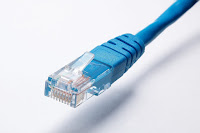Troubleshooting Common Issues with Cat5e Cables: A Comprehensive Guide
Cat5e cables are a popular choice for networking due to their reliability and affordability. However, like any other technology, they can encounter issues that may affect network performance. In this comprehensive guide, we will explore the most common problems associated with Cat5e cables and provide troubleshooting steps to help you resolve them. From connectivity issues to wiring problems, understanding how to troubleshoot these common issues will ensure smooth and uninterrupted network operation. Whether you are a network administrator or a homeowner managing your home network, this guide will equip you with the knowledge to effectively diagnose and resolve Cat5e cable-related problems.
Connectivity Issues:
One of the most prevalent issues with Cat5e cables is connectivity problems. If your network devices fail to establish a connection or experience intermittent connectivity, there are a few potential causes to consider. First, check the cable connections at both ends to ensure they are securely plugged into the appropriate ports. If the connectors appear loose, reseat them to establish a reliable connection. Additionally, inspect the cable for any signs of damage, such as frayed or bent wires. In such cases, replacing the cable may be necessary. If the issue persists, try using a different cable to isolate the problem and determine if it lies with the cable or other network components.
Wiring Problems:
Improper wiring can cause significant issues with Cat5e cables. When terminating the cable, it's crucial to follow the appropriate wiring standards, such as the TIA/EIA 568B or 568A standard, ensuring consistency across the network. Check the terminations at both ends of the cable, ensuring that each wire is correctly aligned with its corresponding pin. Miswiring or crossed connections can result in network errors and intermittent connectivity. Use a cable tester or a network cable analyzer to verify the continuity and proper wiring of the cable. If you detect any wiring discrepancies, re-terminate the cable following the correct standards.
Cable Length and Signal Degradation:
Cat5e cables have a maximum recommended length of 100 meters (328 feet) to maintain optimal signal quality. Exceeding this length can lead to signal degradation and reduced network performance. If you experience issues with data transfer or slower network speeds, consider the cable length between the connected devices. If it exceeds the recommended limit, it may be necessary to use additional networking equipment, such as switches or repeaters, to amplify the signal and maintain reliable connectivity. Alternatively, if the cable length is within the limits, check for any physical damage along the cable's length that may impact the signal quality.
Interference and Crosstalk:
Cat5e cables are susceptible to interference and crosstalk, which can degrade network performance. Interference can be caused by nearby electrical devices, fluorescent lights, or other cables running parallel to the Cat5e cable. To minimize interference, ensure proper cable routing, separating it from power cables and other sources of electromagnetic interference. Additionally, crosstalk can occur when signals bleed from one wire pair to another, resulting in signal degradation. Use high-quality twisted pair cables with good insulation to reduce crosstalk. If interference or crosstalk issues persist, consider using shielded Cat5e cables, which provide additional protection against external interference.
Network Device Configuration:
In some cases, the issue may not lie with the Cat5e cable itself but rather with the configuration of the network devices. Ensure that the network devices, such as routers, switches, and network interface cards (NICs), are configured properly and support the Cat5e standard. Check the device settings for any compatibility issues or misconfigurations that may cause connectivity problems. Updating the device firmware and drivers to the latest versions can also address compatibility issues. Additionally, verify that the network settings, such as IP addresses and subnet masks, are correctly configured to facilitate proper communication over the Cat5e network.
Conclusion:
Troubleshooting common issues with Cat5e cables is essential for maintaining a reliable and efficient network. By understanding the potential problems and their solutions, you can minimize network downtime and ensure smooth data transfer. Remember to check for connectivity issues, verify proper wiring standards, consider cable length and signal degradation, address interference and crosstalk, and review network device configurations. By following these troubleshooting steps, you'll be equipped to diagnose and resolve common Cat5e cable-related problems, allowing you to maximize the performance of your network and enjoy a seamless connectivity experience. Always choose a trusted seller like Datacomm Cables for buying networking cables so that you don`t have to face any sort of problem later on.
.jpg)



Comments
Post a Comment